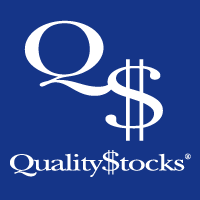International Stem Cell Corp. (ISCO) Unique Stem C
Post# of 124

International Stem Cell Corp., a developer of ethical stem cell therapies (as well as biomedical products) based on their pioneering of an entirely new class of stem cells, hpSCs, or human parthenogenetic stem cells, which offer significant advantages over existing stem cell technologies, continues to see the broad spectrum potential of their technology across the company’s entire therapeutic pipeline.
Parthenogenesis is a form of aesexual reproductive cell division where no fertilization occurs, meaning that no viable embryo is created or destroyed. Derived from unfertilized human eggs (oocytes) and differentiated using a proprietary, patented and chemically-defined process, ISCO’s hpSCs are completely ethical and yet also have superior immune matching (low cell transplant rejection rate) and histocompatability (tissue compatibility) properties compared to existing stem cell technologies. In addition, hpSCs are highly pluripotent, or differentiable into many different cell types, meaning they can be used to treat a broad range of diseases. These novel stem cells are also easily proliferated, meaning large quantities can be grown in the lab and the technology thusly represent an effective, practical solution for developing and executing cost-effective transplantation-based therapies, even for large populations of patients.
Indeed, the fact that ISCO’s hpSC technology allows for derivation of HLA (human leukocyte antigen, the major histocompatibility complex which restricts antigen presentation) homozygous hpSCs, even a relatively limited set of hpSC lines could be used to generate huge quantities of immune-matched cells that would correspond to vast swathes of the human population. This innovative technology captures all the best aspects of other extant stem cell technologies, like adult stem cells, embryonic stem cells (hESC) and induced pluripotent stem cells (iPS), but does not suffer from any of the ethical or logistical limitations. This means that ISCO is essentially the tip of the spear in a therapeutically realistic war against dreaded diseases like Parkinson’s, with real solutions in the offing for ischemic (acute) stroke, as well as metabolic liver diseases (using stem cell-derived liver cells – CytoHep), and the crippling impairment of corneal and retinal blindness (using human retinal epithelium and corneal cells – RPE cells and CytoCor respectively).
With FDA clearance for the company’s hpSC technology already under their belt, as well as a soon to begin Phase 1/2a clinical study in Parkinson’s using their human parthenogenetic neural stem cell technology (ISC-hpNSC), including the already completed production of a 2.6 billion cell stem cell bank that will cover all clinical trial requirements, ISCO is within striking distance of having a viable therapeutic solution to Parkinson’s disease. ISCO’s progress in developing a therapeutically realistic solution to this increasingly prevalent CNS disease no doubt appears as a beacon of hope on the horizon to the millions of people around the world whose lives have been shattered by this disease, which currently impacts the lives of as many as seven million people and takes a heavy toll on their families (not to mention national healthcare systems), due to a progressive loss of nerve cells in the victim’s brain that leads to severe motor and mental impairment.
According to one National Parkinson Foundation study, as many as 9.3 million people worldwide will be living with Parkinson’s disease (PD) by 2030 and estimates for the U.S. alone show that as many as 60,000 new cases crop up each year. Market analysis from last year put the (note that these are typically only marginally effective) 2012 PD therapy market at around $3.56 billion globally ($1.15 billion U.S.) with only 2.18 million cases reported. Conservative estimates forecast that the diagnostics/therapy market will grow to $5.26 billion worldwide ($2.33 billion U.S.) within the next seven years alone, using extrapolated market size estimates on a target of only 2.89 million cases.
The profound utility of ISCO’s ISC-hpNSC technology doesn’t stop at PD either, the same ability of these cells to simultaneously differentiate into dopaminergic neurons, while also expressing brain-protecting neurotrophic factors (neurotrophins are key proteins which help neurons survive and thrive), makes them ideal for treating other CNS disorders and diseases. New results which show ISC-hpNSCs may not only reduce but even reverse the symptoms of neurological dysfunction could prove huge for people who have suffered from a stroke, especially considering that the 795,000 plus strokes which occur each year leave those who manage to survive with zero currently approved treatment options, aside from grueling and generally only partially effective physical rehab.
Peer-reviewed publications showing the superior immunological properties of hpNSCs compared to other neural stem cells is also an extremely promising advantage for ISCO and the company has plans to investigate this abundant potential in further detail via upcoming studies. A presentation of extant data on the potential of hpNSCs, including how they are actually attracted to the site of an injury by naturally-occurring molecular chemistry signals, reducing swelling and forming new brain tissue, is set to take place at an upcoming scientific conference and will be announced in the very near future. For ischemic stroke (which accounts for nearly 90% of all stroke cases), the $1.2 billion diagnosis and therapy market as of 2013 set to hit $1.9 billion in five years (6.3% CAGR), where the immediacy of therapeutic response time is directly proportional to recovery outcomes (success), the value of hpNSC therapy, which has been shown in pre-clinical work to reverse associated functional deficits even several weeks after the stroke, is substantial.
A highly effective therapy for acute stroke that can be applied even weeks after the actual stroke would be a major game changer and could help propel ISCO to the top of the stem cell industry.
Dig deeper into this innovative stem cell therapy developer at www.internationalstemcell.com
Please see disclaimer on the QualityStocks website: http://Disclaimer.QualityStocks.com
 (0)
(0) (0)
(0)